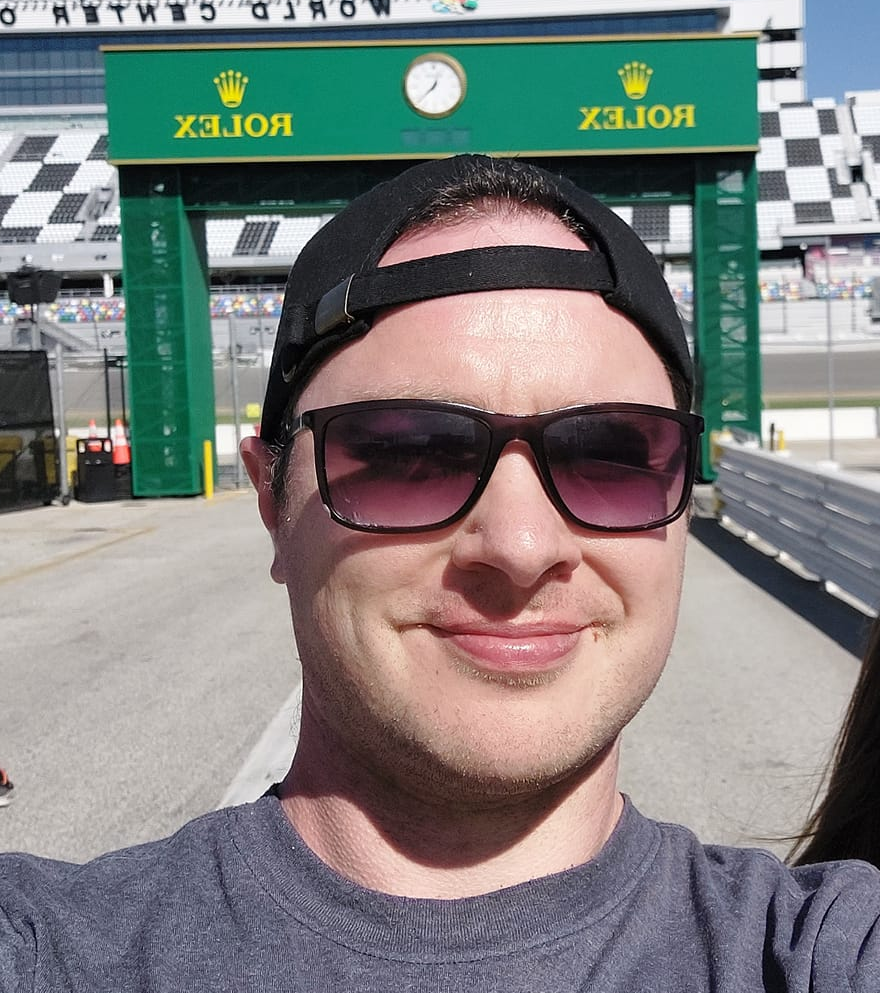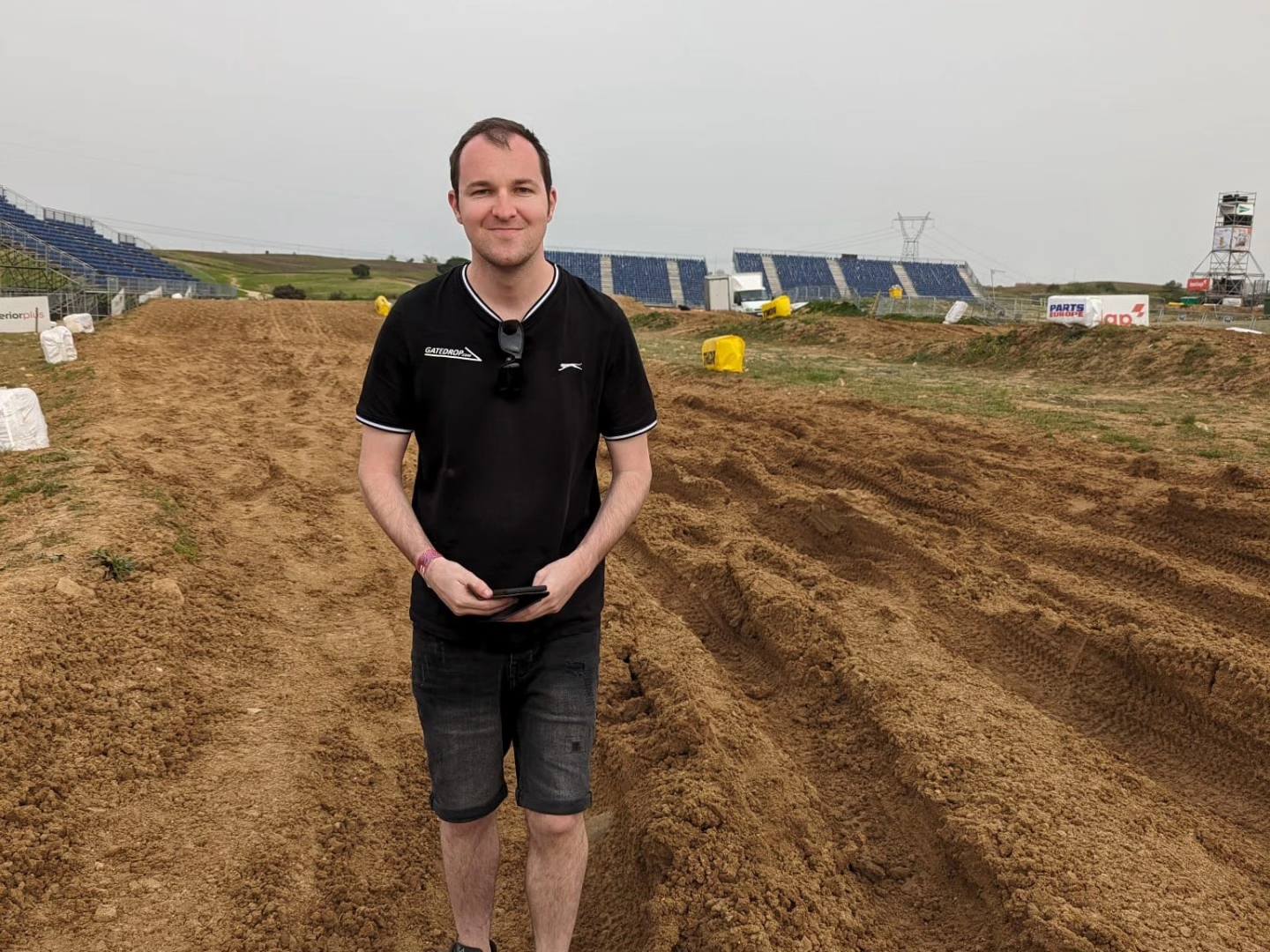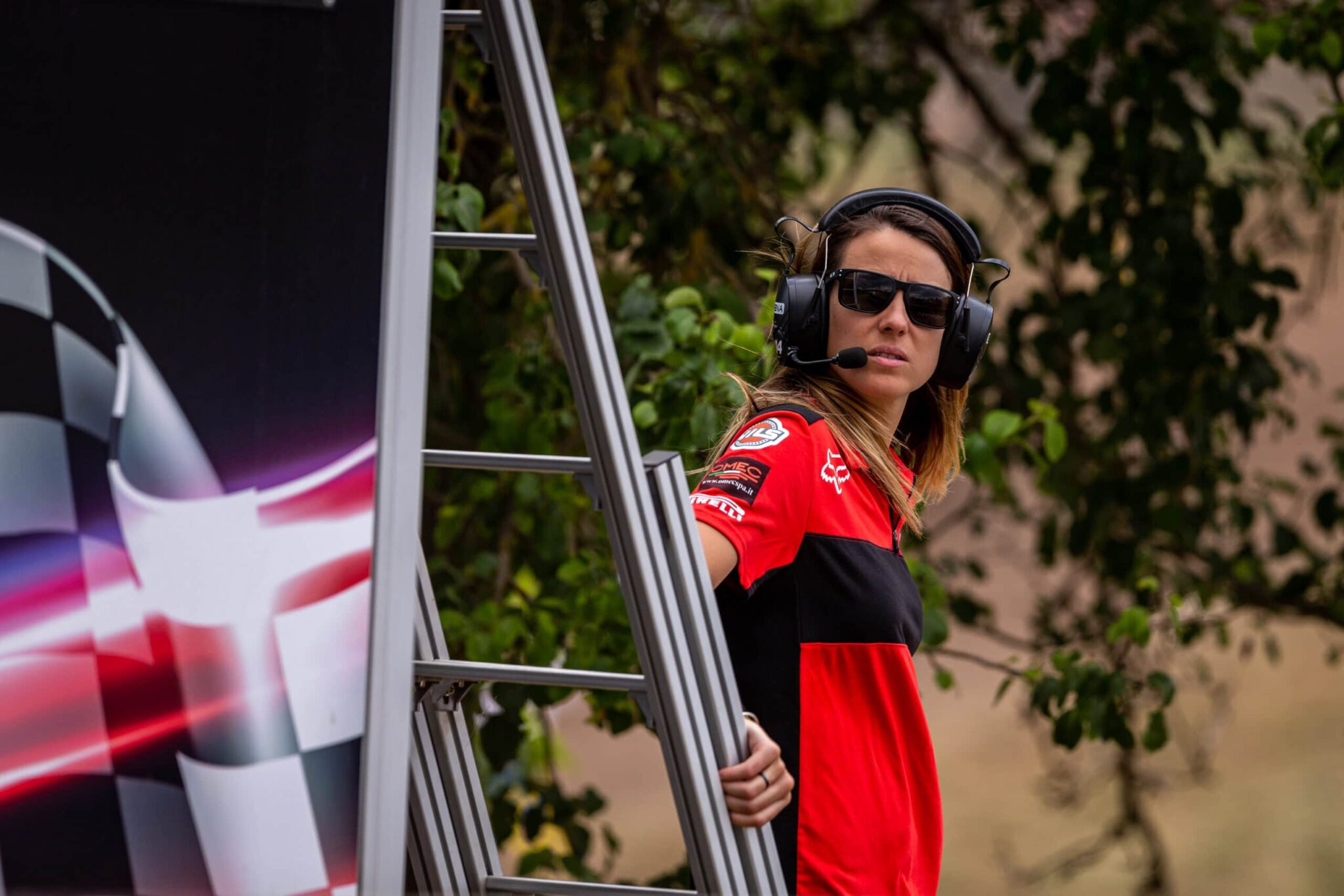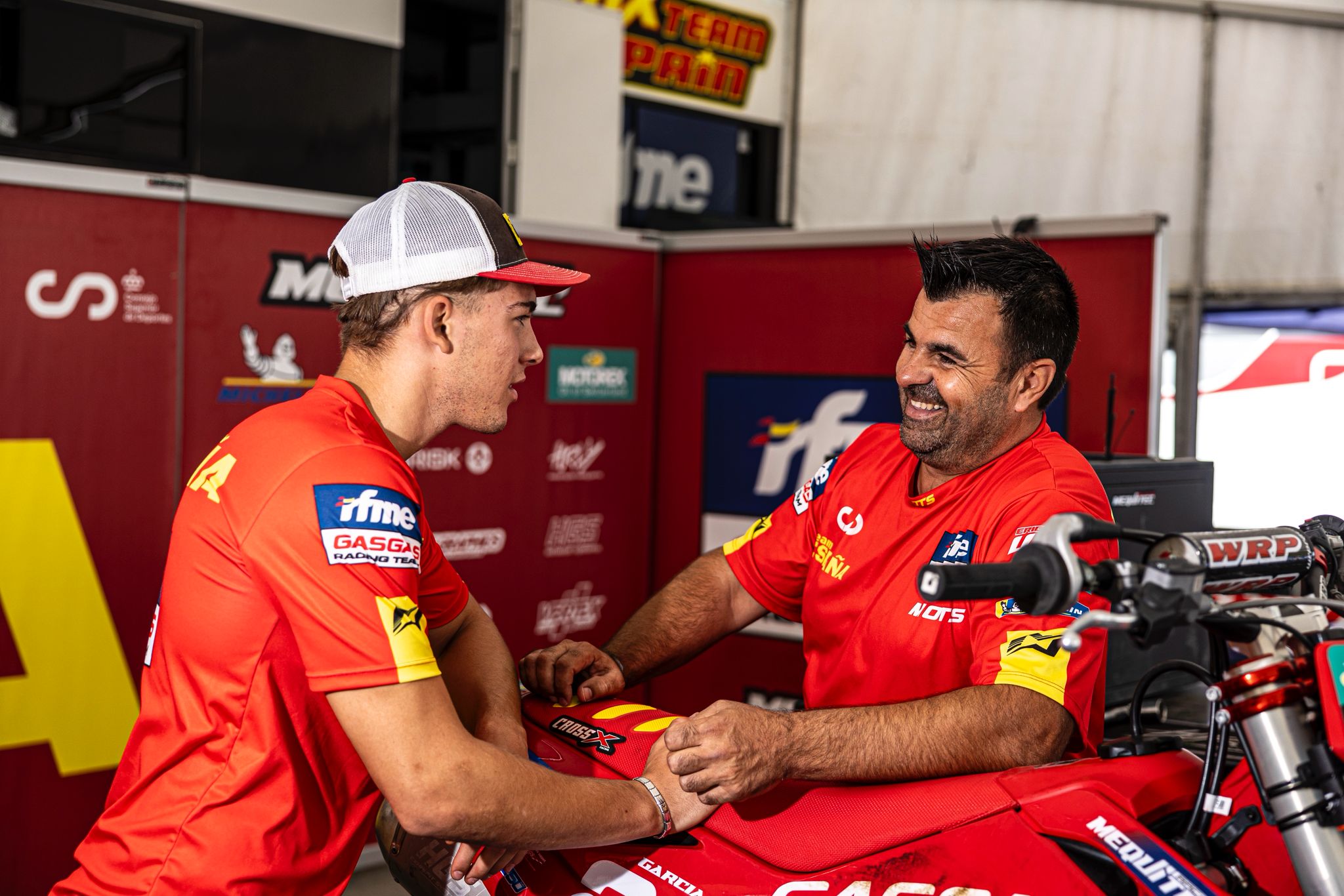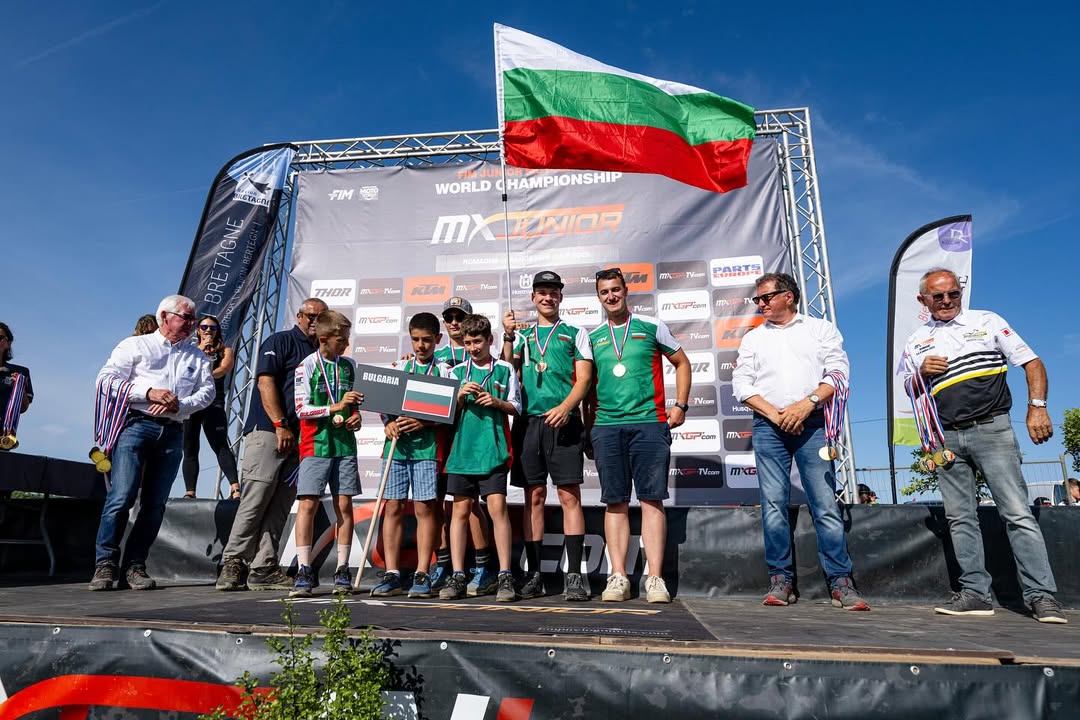If Simone Furlotti’s name sounds familiar, it’s probably because the Italian spent many seasons navigating the paddocks as a rider, most notably making a name for himself in the 2017 EMX250 Championship, where he secured the runner-up spot ahead of the likes of Alberto Forato, Ruben Fernandez, and Jago Geerts.
Unfortunately for Furlotti, his racing career took an unexpected turn due to injury, but also because of the introduction of an age limit—set at 23 years old—for the EMX250 class. A rule that would later be lowered again to 21 years of age as of the 2023 season. Almost forced to step away from racing, Furlotti managed to bounce back and stay involved in the paddock by taking on the role of race mechanic—first for Kevin Horgmo, and now for Tim Gajser.
Kevin Frelaud sat down with the man who wrenches for a five-time world champion.
“Ending my racing career was a pretty difficult decision for me,” admits Furlotti. “Difficult because I knew I had potential. Then came an injury, and also a money problem—let’s say a budget issue. That’s why I chose to stop racing competitively. During my last injury, I broke my collarbone and my arm. When I came back, I just didn’t feel comfortable on the bike anymore—it wasn’t like before, it didn’t feel natural anymore. That was a major decision in my life. I had to stop racing at a high level after the 2018 season because I had turned 24. At the time, the EMX250 Championship didn’t yet have an age limit, which is why I had tried to step down from MX2 to the EMX250. But in November or December, right before the start of the 2019 season, they changed the rules and imposed an age limit on the European series as well. It was quite unfair—for the riders, but also for the teams. Everyone already had contracts in place. At that moment, my team—alongside Matteo Bonini—supported me so I could line up for a few 450 races. I really have to thank him, because he tried to help me keep racing.”
After closing the chapter on his professional racing career, Furlotti quickly considered a new path within the sport. Leveraging his industry knowledge and long-standing interest in mechanics, he simply switched roles within the SM Action team. By 2021, Simone was no longer racing but was instead taking care of Kevin Horgmo in a mechanic role, who had just joined the Italian outfit following a challenging 2020 season with Marchetti.
“When I was younger, my father had a workshop. I got hands-on experience with him, working on everything from motorcycles to scooters,” Furlotti explains about his mechanical background. “In 2020, when I was competing solo in the Italian Championship with my dad, I was my own mechanic. I took care of my bike after races and also after practice sessions. I prepared my bike myself for almost the entire season. Even when I was still racing at a high level, I often did maintenance after practice. I’ve always loved the paddock atmosphere and wanted to stay involved. So I thought: ‘Why not try to stay here, with SM Action, after my riding career?’ I had spent three years with them, I knew the boss well—he’s a good guy. That’s when I started a new chapter, becoming Kevin Horgmo’s mechanic. That lasted one year.”
After a year working with Kevin Horgmo, Furlotti tried his luck with Honda 114, but the partnership was short-lived.
“Then, I asked Giacomo Gariboldi if I could join 114 Motorsports alongside Livia Lancelot. I knew Ciro Franzon, an Italian who was the technical manager in Italy that year. So, I went to try the role at Honda 114—but only for a week. At that time, there wasn’t really a dedicated bike. They had Ruben [Fernandez], but they weren’t sure yet if he would stay in MX2 or move up to MXGP. My role was to strip the bike down, put it back together, wash it… I was learning because it was a different kind of bike for me. But the team already had a mechanic… After a week, we weren’t really sure what we could do together with 114 Motorsports, so I went back home. A few weeks later, I got another call from Ciro. He asked me, ‘Would you like to be Tim Gajser’s race mechanic?’ I was like, ‘What? Sorry?’ That’s how, in 2022, I started working with Tim Gajser as his official mechanic. At that point, I had only been a race mechanic for about a year, with Kevin Horgmo.”

Gajser and Furlotti had crossed paths before, but in a very different context. In 2012, the Slovenian rider won the first six rounds of the EMX125 Championship and secured the title before the final. He then skipped the last round in Faenza to make his debut in MX2, thus competing in the very first Grand Prix of his career. In Gajser’s absence, the EMX125 final was won by… Furlotti! Ten years later, fate brought them together under the Honda HRC team awning.
“I only knew Tim because I had raced against him before, but we had never really spoken face to face,” Furlotti recalls. “Working with him went well from the start because Tim is a nice guy. But that first year was very stressful for me. It was only my second year as a full-time race mechanic, and here we were talking about a factory team… Tim isn’t a tenth place rider, and the bike is factory spec too. There’s an enormous amount to do on it. We completely strip down the bike at every Grand Prix. The engine needs to come out so the engine builders can work on it, we have to handle the brakes, the frame, all the electronics… it’s a huge job. It’s not even comparable to what I did the previous year on Kevin Horgmo’s bike. Yes, Tim won the title that year, but for me, it was by no means an easy season.”

Working with one of the best riders in the world also means learning to build a lasting working relationship and trust behind closed doors. With Gajser, Furlotti had to adapt to the Slovenian’s reserved personality.
“You have to know that Tim is someone who likes to stay in his bubble. He likes being alone, doing things his way, staying in Slovenia, for example. When he’s at races, he spends a lot of time in his motorhome, he prepares his goggles himself, he’s in his zone. He doesn’t come to the team truck very often. At first, it was a bit difficult for me because I was his mechanic, and I hardly ever saw him without his helmet on [laughs]. He would arrive at the team truck on his pit bike, jump straight on his race bike, and head off to the track [laughs]. But then, we started talking more and built a real relationship. I would go see him in his motorhome, and we’d also chat at the team truck. It’s important to have trust between each other.”
Injured in Switzerland while leading the MXGP World Championship, Gajser was forced to abandon his hopes for a sixth world title. As the Honda HRC official prepares to return to the track to finish the 2025 season, Furlotti has taken on the role of secondary mechanic for Ruben Fernandez, supporting Federica Sezzi, who works with the Spanish rider within Giacomo Gariboldi’s structure. The highs are shared as a team—and so are the lows.
“The bad moments for us are always injuries, like in Arco in 2023 when Tim broke his femur. His last race and injury in Switzerland was also a real blow. Especially because you can see it in Tim’s eyes—that look shows he’s going through a tough time. When a rider gets injured, there’s a lot of suffering, not just physical. Behind that, there’s all the hard work that suddenly vanishes. But then there are the best moments, too. When he’s crowned world champion. Even if the last day is extremely stressful, winning a title is always a great moment. The day before, the pre-race, the last moto, those few moments before clinching the title are very tense. After that, it’s pure relief.”

While the 450 CRF of the five-time world champion obviously benefits from the attention and development demanded by a factory program, the real secret lies elsewhere: that secret is Gajser himself. Being the mechanic for the Slovenian rider means showing absolute rigor to enable the man to make the difference aboard a machine set up to the millimeter.
“Tim doesn’t have any specific or unusual settings on his bike,” Furlotti stresses. “But he wants everything to be perfect, absolutely perfect. The handlebar has to be perfectly adjusted, the lever positions must be flawless too. One time, the grooves on his grip weren’t exactly where they usually are. Tim noticed it, and I had to change the grips [laughs]. Now, after four years together, let’s say everything has become more natural, and I know him well enough. In the end, Tim Gajser’s bike is a normal bike that’s very well maintained. It’s a factory bike with factory parts, yes, but it has two wheels just like any other bike. Any rider could ride his bike. Of course, it’s more powerful, but the difference isn’t huge compared to a stock bike. There are differences, but they’re not drastic. Look at Kevin Horgmo; he rides a stock bike, and he rides very well. A factory bike isn’t magic.”

Mechanic, yes. Jack-of-all-trades, no. Furlotti only handles basic maintenance operations on Gajser’s engine. The suspension is managed by dedicated technicians, as is the bike’s mapping and electronics. In practice, Furlotti is responsible for the upkeep of Gajser’s machine — a full-time job when working with a rider of Gajser’s caliber.
“Massimo Castelli takes care of Tim’s engines. There’s also a Japanese technician who handles all the mapping and electronics on his bike. And there are technicians who take care of the suspension. The engine and suspension aren’t really my domain. I handle the clutch and small engine work, but if the engine needs to be opened up, we have specialists for that.”
This season, Gajser switched from Showa suspension to KYB. A topic rarely discussed, often brushed off with a wave of the hand. It’s easy to understand why Furlotti must be cautious with his words as well. Still, he shared some insights about the lifespan of parts on the 450 CRF Factory. No, Gajser’s bike isn’t your everyday machine…
“Honestly, we don’t really know how long a clutch lasts with Tim because a clutch only lasts one session with him. Tim has a new clutch on his bike every time he goes out on track during a Grand Prix — free practice, timed practice, qualifying race, warm-up, race 1, and race 2: a new clutch every time because that’s what Tim wants. That’s six clutches per GP. We don’t throw them away though; we reuse them on his training bikes. We carefully track the hours of use on every part of the bike and replace components accordingly. For instance, we regularly change the frame after a specific amount of hours, before moving it onto the practice bike”.
As you’ve probably guessed, Furlotti has swapped his helmet for a toolbox. While he’s found a balance between his love for the sport and his professional career in his role as a mechanic, the call of competition is still very much alive. It’s a demanding routine where hours blur together, but one that allows him to stay close to his passion.
“Do I miss racing? Yes, a lot. I ride occasionally, but I don’t really have the time. This job, let’s say it’s a good compromise to live my passion, but you have to be ready to work hard. We don’t count our hours every week. I don’t even know how many hours I put in. In winter, we usually have a bit of free time. After the last race of the season, we get a few days off, then we start testing. November comes quickly, and for example, I have to work on the bikes for EICMA and prepare them for the next season.”
At the highest level of the world championship, being a mechanic demands far more than technical know-how. It requires precision and total commitment. Furlotti knows this well. Drawing on his paddock experience, the Italian now puts his field knowledge at the service of Gajser. For him, there’s no room for ego: only passion justifies being granted access to a factory team on the world stage.
“Actually, when you do this job, you have to be fully invested. Everything has to be perfect because every session is very important for the rider. When it rains and we have a muddy Grand Prix, it gets pretty complicated for us. We also know that the start is crucial, and now with the metal starting gate, we have to make sure everything is perfect, especially regarding the tires. You really have to stay focused because if you make a mistake somewhere, Tim can get a bad start and everything snowballs quickly. Ensuring everything is perfect is essential in this job. I don’t have a big mechanical background, but I know the paddock, the industry, and how everything works. I think that has made my life easier. And going from rider to mechanic isn’t that complicated. My advice to anyone who wants to become a mechanic in the paddock would be to stay humble, work hard, and keep your feet on the ground. You’re not here to show others you’re a factory team mechanic. No, you have to be passionate about the job.”

